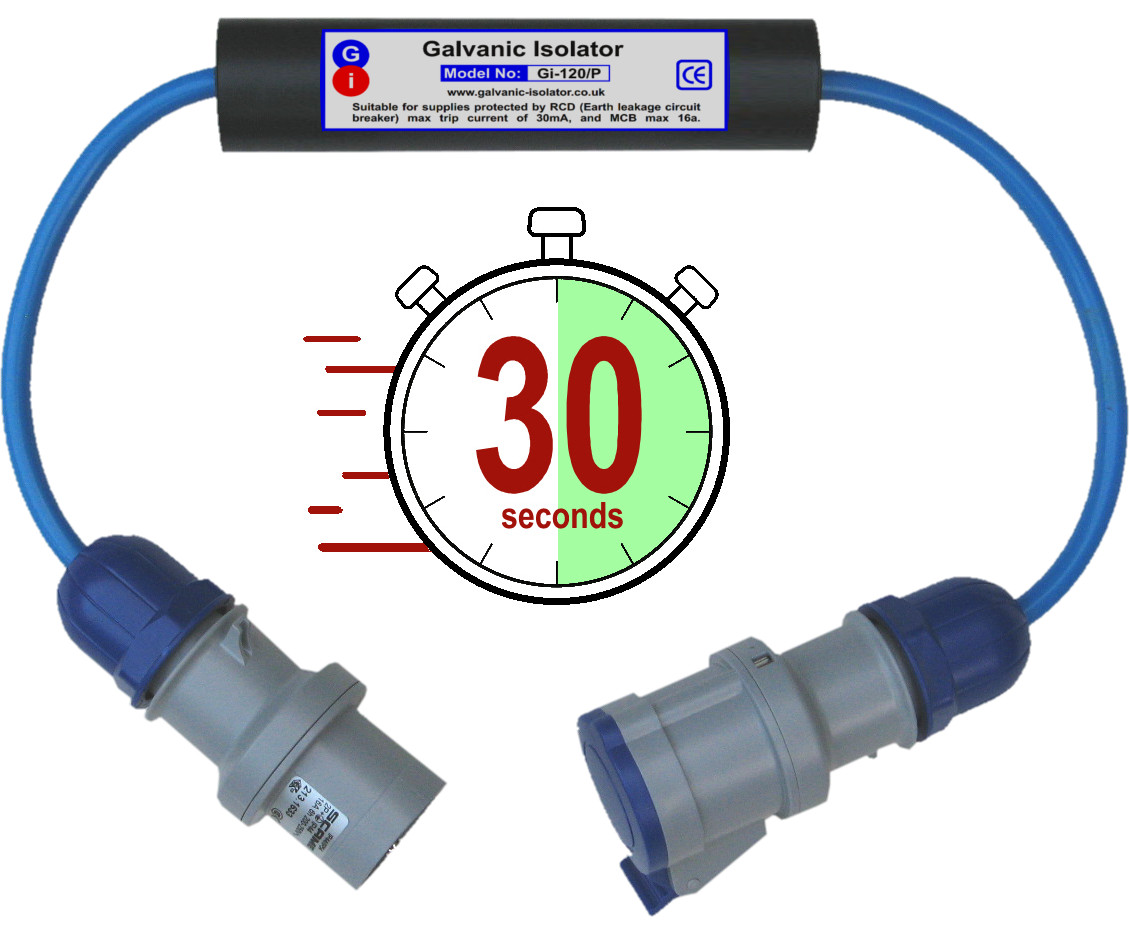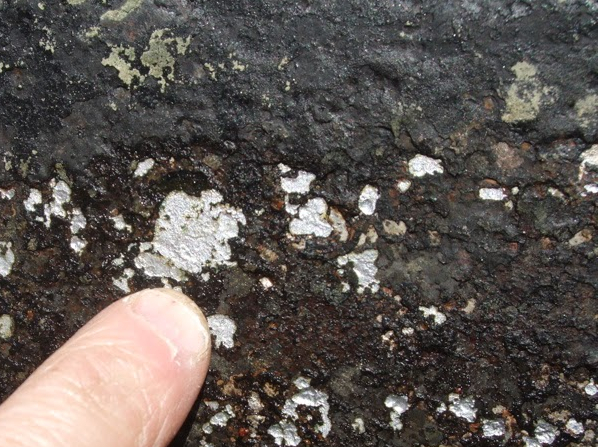If you're spending more time than you planned in the marina, give a thought to your boat and her hull.
While you're moored and connected to an electric hookup, Galvanic currents can eat away at your boats hull. And the longer you're connected, the more her hull corrodes.
It's easy to check by looking around the waterline. Pitting and Corrosion (rust to you & me) often starts here, and Galvanic currents are a common cause (See top image).
The silver spots on the lower image are zinc from the anodes that have plated the hull as result of Galvanic currents. The metal from the anodes is stuck to the hull, giving it a measure of protection. However, the anodes themselves will have been corroded away, and when the anodes are gone, there's nothing to protect the hull, and deep pits will form, which could eventually lead to perforation of the boat's hull.

You can stop this type of corrosion easily - by fitting a simple Galvanic isolator. There's no wiring needed - you just plug it in, and the Galvanic currents stop. Instantly.
People report that hull pitting stops, and anodes last several times longer than before the isolator was fitted.
From our personal experience, if you're unable to "black" your boat's hull as often as you'd like, a Galvanic isolator can extend the time between haul outs.
Our own boat hadn't been "blacked" for 4 years, but when she was taken out of the water, there was very little anode corrosion, and the small amount of corrosion that was visible previously had not got any worse at all.
To get YOUR Galvanic isolator... ![]()




